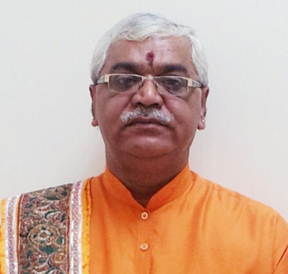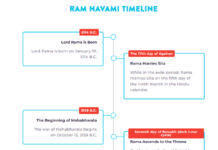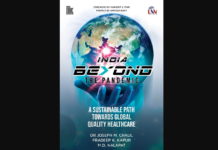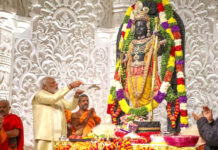
According to Hindu calendar,
Chaitra is the first month and its first day is celebrated as the start of Hindu New Year. This calendar known as Hindu Punchang is based on Luni-Solar system that is very much close to accuracy.
Even in modern times, it is released with Vedic rituals and read with great devotion by Pandits on this day for their devotees, after the worship of their Ishta Devata, Kula Devata and Gram Devata. For Hindus, this year is VikramSamvat2073 that begins on Chaitra Shukla Pratipada. New Year festivals like Chaitra Navaratri, Ugadi, and Gudi Padwa will be celebrated in India and abroad.
People visit temples, greet each other and pray for a healthy, wealthy and prosperous life. Above all, seeking blessing from religious places on this day holds an additional significance. Chaitra Navratri that generally comes in the months of March-April marks the end of the winter season and beginning of the short spring followed by the summer in India.
Chaitra Navaratri is also known as Vasant or Vaishnava or Ram Navratri. It is celebrated more traditionally with great pomp and devotion in the northern part of India. This year, Chaitra Navratri is on April 8 and will continue for 9 days until Friday, 16th April. Devi Pujan along with Kalash and sowing of paddy will be performed with family members, relatives and friends by fasting till nine days, singing hymns to get the good health, wisdom and blessing of Goddesses.
The Kanyapujan is performed on the eighth day and some people also perform it on ninth day. Apart from food, people also offer money and many other forms of gifts to young girls. In Hinduism, women are worshipped as equal to goddesses, during their childhood as Kanya, adulthood as Lakshmi and during post-adulthood as Devi Maa.
Chaitra Navratri is the most significant festival of Hindus because during this time of the year, it is considered that there is an important junction of climatic and solar influences. This period is taken as a sacred opportunity to worship the Divine Mother Durga, the Goddess of cosmic powers, to be blessed by Her divine benediction, new energy and vigor.
Chaitra Navratri also marks the onset of the Ghreeshma or summer season, when the Mother Nature undergoes a major climatic change. It is a popular belief that by observing a vrat (fast) during the Chaitra Navratri, the body is prepared for ensuing summer season. It is also believed that if devotees worship Goddess Durga without any worldly desires to be fulfilled, they will attain salvation.
The ninth day of the Navratri festivity is also celebrated as the birthday of Lord Rama which marks the end of Chaitra-Navaratri celebrations. In temples and houses, the images of Baby Ram will be placed in the cradles and swung with devotion using flower ropes. At temples special Homam, Abhishekam, Puja, Aaarti will be done amidst the chanting of Vedic mantras. Pravachans, devotional Keertans, singing of Bhajans, continuous recitals of Ramayana will begin 9 days in advance.
On 9th day, devotees will complete their Ramayana Path before noon and celebrate Ram Janma Utsav at noon with all Vedic rituals and distributing toys and candies to children. Devotees decorate their baby as Baby Ram and bring them to temples. Lord Vishnu took Lord Ram Avatar to destroy the demon Ravan and uphold Dharma.
It is one of India’s most pious, joyous, and enlightening festivals which promotes Lord Rama’s message of Dharma, neeti, adarsha, manavata and victory of good over evil. Celebrations on this day begin with prayers and observing fast. The best place to see the festivities in full swing is Ayodhya, the city where Lord Rama was born. The whole city will be decorated with illuminating lights and garlands of flowers.
The procession of decorated chariots will be the highlights of the grand celebrations. Blessings of Lord Rama for family welfare and applying his principles and ideologies in life will ensure balance, stability, and peace.
Pt Anil Joshi






